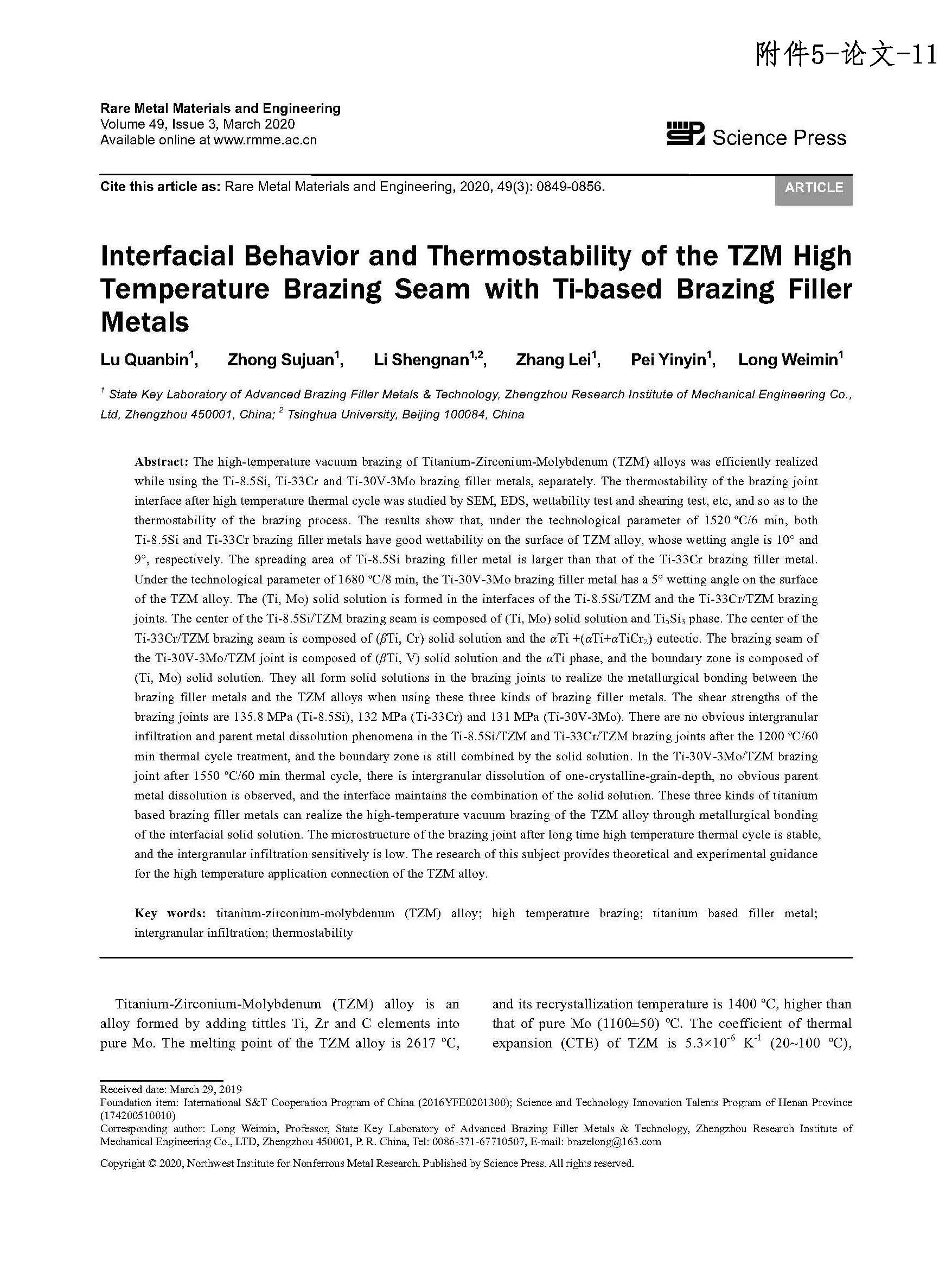The high-temperature vacuum brazing of Titanium-Zirconium-Molybdenum (TZM) alloys was efficiently realized while using the Ti-8.5Si, Ti-33Cr and Ti-30V-3Mo brazing filler metals, respectively. The thermostability of the brazing joint interface after high temperature thermal cycle was studied by SEM, EDS, wettability test and shearing test, etc. And so as to the thermostability of the brazing process. The results showed that, under the technological parameter of 1520℃/6min, both Ti-8.5Si、Ti-33Cr brazing filler metals had good wettability on the surface of TZM alloy, the wetting angle was 10° and 9°, respectively. The spreading area of Ti-8.5Si brazing filler metal was larger than that of the Ti-33Cr brazing filler metal. Under the technological parameter of 1680℃/8min, the Ti-30V-3Mo brazing filler metal had a 5° wetting angle on the surface of the TZM alloy. The (Ti, Mo) solid solution was formed in the interfaces of the Ti-8.5Si/TZM and the Ti-33Cr/TZM brazing joints. The center of the Ti-8.5Si/TZM brazing seam was composed of (Ti, Mo) solid solution and Ti5Si3 phase. The center of the Ti-33Cr/TZM brazing seam was composed of (βTi, Cr) solid solution and the αTi + (αTi+αTiCr2) eutectic. The brazing seam of the Ti-30V-3Mo/TZM joint was consist of (βTi, V) solid solution and the αTi phase, and the boundary zone was consist of (Ti, Mo) solid solution. There all formed solid solutions in the brazing joints to realize the metallurgical bonding between the brazing filler metals and the TZM alloys when using these three kinds of brazing filler metals. The shearing strength of the brazing joints were 135.8MPa (Ti-8.5Si), 132MPa (Ti-33Cr) and 131MPa (Ti-30V-3Mo), respectively. There were no obvious intergranular infiltration and parent metal dissolution phenomena in the Ti-8.5Si/TZM and Ti-33Cr/TZM brazing joints after the 1200℃/60min thermal cycle treatment, the boundary zone was still combined by the solid solution. In the Ti-30V-3Mo/TZM brazing joint after 1550℃/60min thermal cycle, there was one crystalline grain depth intergranular dissolution phenomenon, no obvious parent metal dissolution was observed, and the interface remaining combined by the solid solution. These three kinds of Titanium based brazing filler metals can realize the high-temperature vacuum brazing of the TZM alloy through metallurgical bonding of the interfacial solid solution. The microstructure of the brazing joint after long time high temperature thermal cycle is stable, and the intergranular infiltration sensitively is low. The research of this subject provides theoretical and experimental guidance for the high temperature application connection of the TZM alloy.
